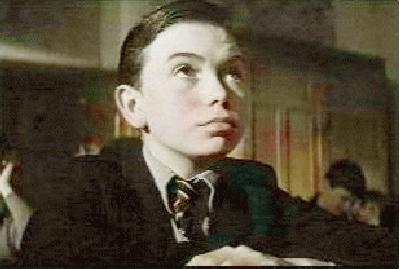
Figure 1.--Pink is seen here in his school uniform. |

|
"Pink Floyd The Wall" was written by Roger Waters, designed by Gerald Scarfe (animator), and directed by Alan Parker. A phantasmagoric musical based upon the classic eponymous progressive rock album, which is, in turn, a semi-autobiographical account of
writer/songwriter Roger Waters' life, and an homage to his late father, who died in World War II, and former band member, Sid Barret, who developed schizophrenia while in the band.
There are two different actors playing the younger version of Rock star
Pink. The Education/School sequence representing all English Public Schools. Theere is also a Desert/Father/soldiers coming home railway scene. The rest of the film is the mental breakdown of rock star Pink, as he sits in his hotel room, wasting away and drowning in psychosis. Interspersed in-between "reality" and animation.
Written by Roger Waters, designed by Gerald Scarfe (animator), and directed
by Alan Parker. A phantasmagoric musical based upon the classic eponymous progressive rock
album, which is, in turn, a semi-autobiographical account of writer/songwriter Roger Waters' life, and an homage to his late father, who died in World War II, and former band member, Sid Barret, who developed schizophrenia while in the band.
The two actors playing a young Pink are David Bingham and Kevin Mckeon.
Little Pink (David Bingham) is about 7 or 8 years old, and is first seen at a mass for fallen officers; while his mother prays, little Pink plays with his model Lancaster warplane over the pews; he wears a formal grey short pants suit, white shirt and dark tie; war medals adorn his left breast pocket. Next, little Pink is wandering around a local park,
watching as the other children play with their mothers and fathers. Pink, wearing common short trousers grey shirt and blue/red striped tie, grey blazer, and a colorful striped jumper, with light grey or beige knee socks, down around ankles; little Pink wears Mary Jane strap shoes.
Young Pink (Kevin Mckeon), age 12 or 13, still wears short pants outfits, day in, day out. Short trousers are very long, just at/or below the knee, grey button up shirt, gray blazer, a sleeveless, stripped jumper (some blocks of stripes are actually patterns, like a red leaf pattern), grey knee socks have one stripe at cuff, usually mid-calf or sagging lower; Young pink now wears brown t-strap sandals. Tie is now more patriotic, red, white and
blue stripes. Outerwear includes long woolen overcoat for early spring scene
at rail tracks, as Pink and mates attempt to detonate bullets once belonging
to Pink's father upon the tracks. A later outdoor scene, during the desert
fathers/soldiers coming home scene, he is wearing a long grey rain coat.
During one classroom sequence, when the teacher is mocking him and his
discovered poetry, young Pink wears a black, waist-length jacket/blazer.
Young Pink walks around with hand tucked into his trouser pockets. At a
ballroom dancing lesson sequence, young Pink wears long grey trousers (only
this one time).
Two sequences appear to be most pertinent to HBC.
Representing all English Public Schools, all of the boys wear long pants uniforms with a variety of blazers; from plain grey and black and red, to blue with a lighter blue trim around lapels. Girls wear skirts, jumpers, white shirts and knee socks. The children,
wearing faceless masks, uniformly march onto a conveyor belt, which pumps
them out in desks, that take them again into formation before delivering
them to the gigantic meat grinder. The students then revolt against "the
system," and run riot, destroying the school and all its contents and leads
the teachers away. During one chorus, is a wide shot of a group of
Eaton boys, complete with Eaton collars and boater hats.
Pink wanders around the desert of his mind, visiting the sight of his father's foxhole, full of the dead. He then walks into mist, re-emerging at a train station where
boxcars full of servicemen are returning to their waiting family. Young Pink
walks about, hands tucked into the pockets of his short trousers, looking
for his dead father's return. Suddenly the Boy's Brigade Brass Band arrives;
boys in both long trousers and short trousers and black knee socks, Boy's
Brigade Uniform as the citizens join in the chorus as "The Boys come Home."
The rest of the film is the mental breakdown of rock star Pink, as he sits
in his hotel room, wasting away and drowning in psychosis. Interspersed
in-between "reality" and animation. depicting Pink's shattering psyche,
while giving images to the music of Pink Floyd's and Roger Water's most
famous piece of work.
The costuming of the Pink chracter as a boy is described above. Our reviewer notes an commentary on the DVD by Roger Waters (screenplay/song writer) and Gerald
Scarfe. They comment on society and short trousers, and how their mother's kept them
in short trousers until age 14, while the other boys they knew were out of then at age 12. Then they get into short trousers and repression, the institution of school, and bad teachers.
Navigate the Boys' Historical Clothing Web Site:
[Return to the Main movie page]
[Return to the Main alphabetical Pd-Pl movie page]
[Introduction]
[Activities]
[Biographies]
[Chronology]
[Clothing styles]
[Countries]
[Bibliographies]
[Contributions]
[FAQs]
[Glossaries]
[Satellite sites]
[Tools]
[Boys' Clothing Home]
